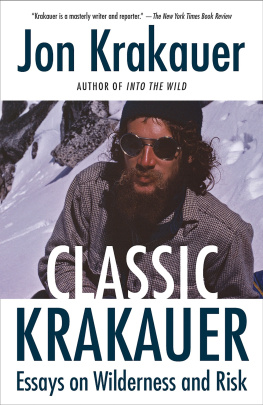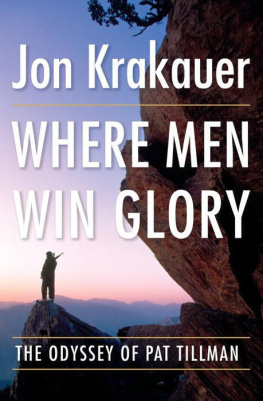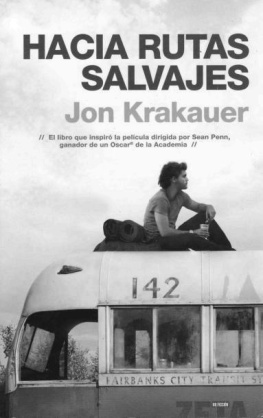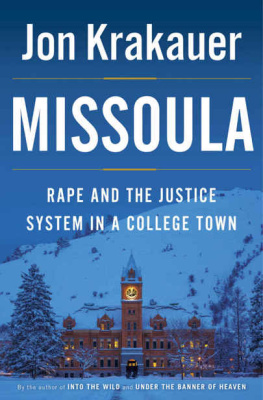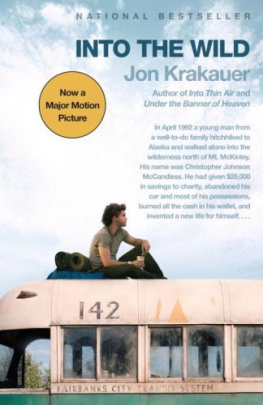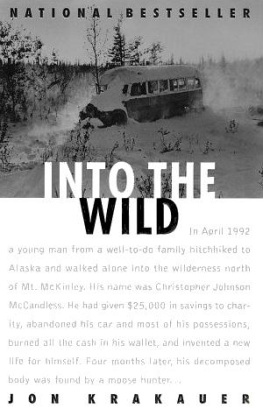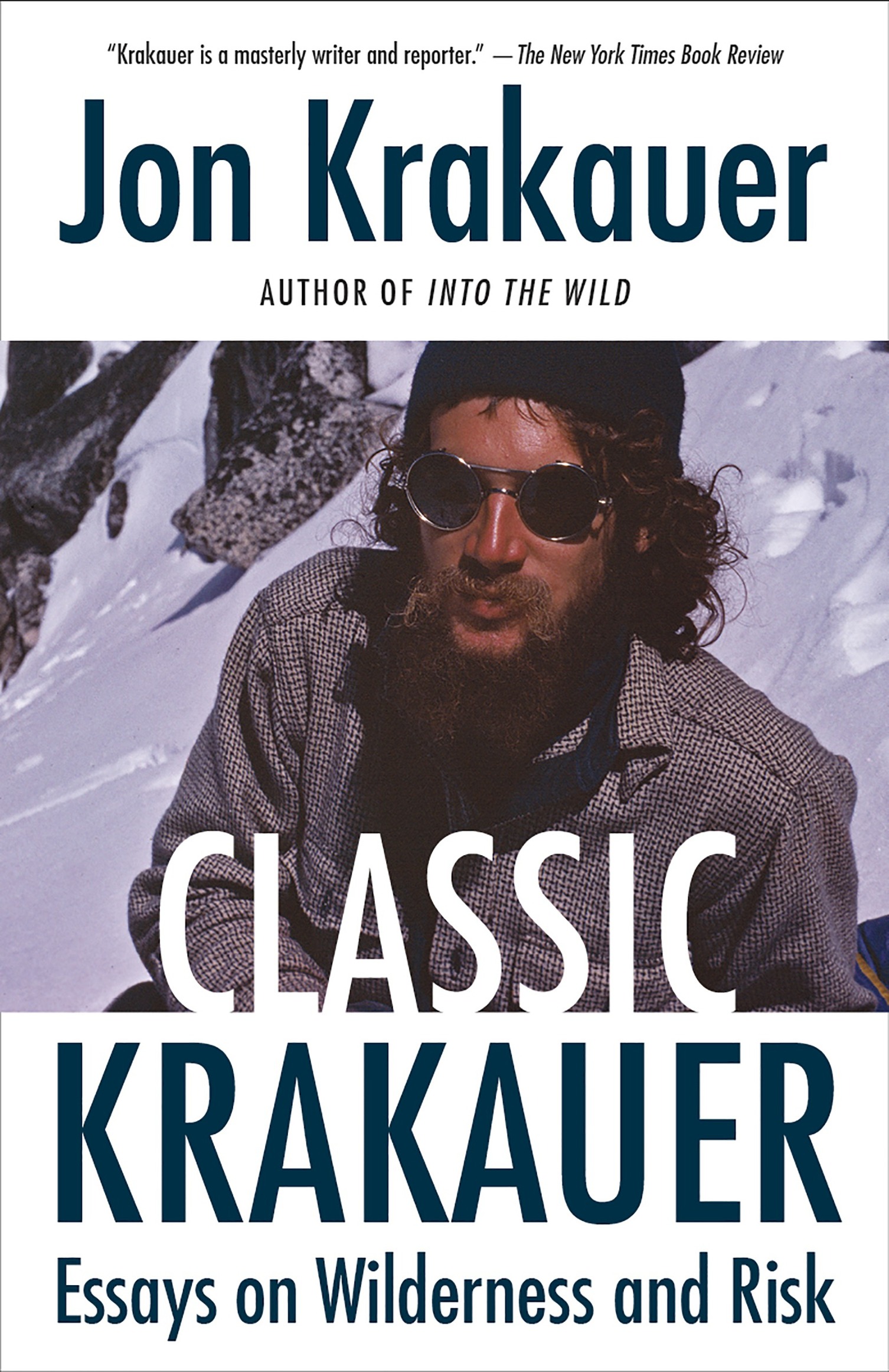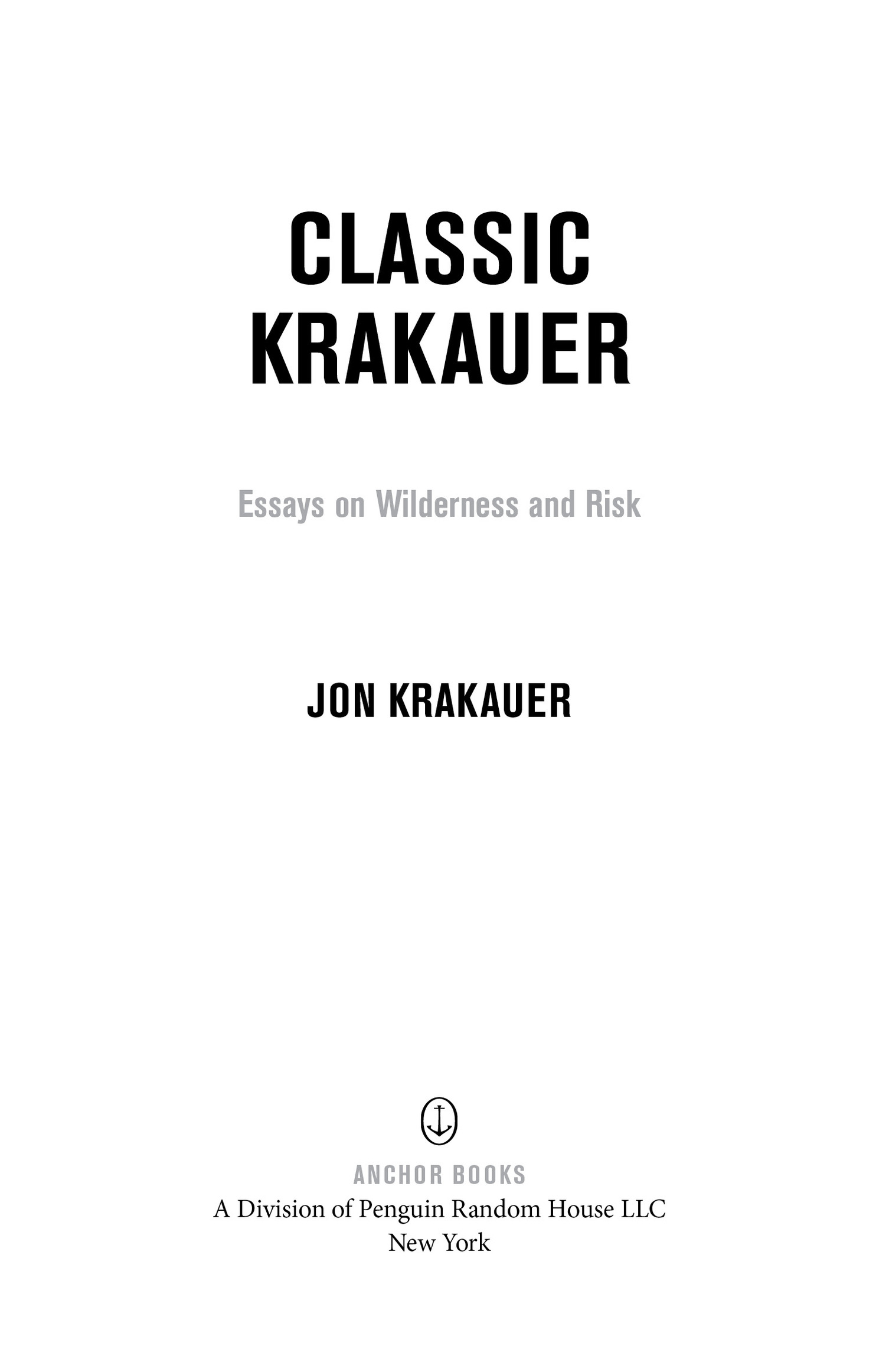Jon Krakauer is the author of eight books and has received an Academy Award in Literature from the American Academy of Arts and Letters. According to the award citation, Krakauer combines the tenacity and courage of the finest tradition of investigative journalism with the stylish subtlety and profound insight of the born writer.
ALSO BY JON KRAKAUER
Eiger Dreams
Into the Wild
Into Thin Air
Under the Banner of Heaven
Where Men Win Glory
Three Cups of Deceit
Missoula
FIRST ANCHOR BOOKS EDITION, OCTOBER 2019
Compilation copyright 2019 by Jonathan R. Krakauer
All rights reserved. Published in the United States by Anchor Books, a division of Penguin Random House LLC, New York, and distributed in Canada by Penguin Random House Canada Limited, Toronto. Originally published in slightly different form as an original eShort by Anchor Books, a division of Penguin Random House LLC, New York, in 2018.
Anchor Books and colophon are registered trademarks of Penguin Random House LLC.
The pieces first appeared in the following publications:
Medium: Embrace the Misery (July 29, 2014)
New Age Journal: A Clean, Well-Lighted Place (December 1985)
The New Yorker: Death and Anger on Everest (April 21, 2014)
Outside: After the Fall (June 1990), Fred Beckey Is Still on the Loose (July 1992), Loving Them to Death (October 1995), Mark Foos Last Ride (May 1995)
Smithsonian: Gates of the Arctic (June 1995), Living Under the Volcano (July 1996)
Smithsonian Air & Space: Descent to Mars (November 1995)
Library of Congress Cataloging-in-Publication Data
Names: Krakauer, Jon, author.
Title: Classic Krakauer : essays on wilderness and risk / by Jon Krakauer.
Description: First Anchor Books edition. | New York : Anchor Books, a division of Penguin Random House LLC, 2019.
Identifiers: LCCN 2019018697 (print) | LCCN 2019021956 (ebook) | ISBN 9780525562733 (ebook) | ISBN 9781984897695 (paperback : alk. paper)
Subjects: LCSH: American essays. | Wayfaring life.
Classification: LCC PS3561.R238 (ebook) | LCC PS3561.R238 A6 2019 (print) | DDC 814/.54dc23
LC record available at https://lccn.loc.gov/2019018697
Anchor Books Trade Paperback ISBN9781984897695
Ebook ISBN9780525562733
Cover photograph by Pam Brown Jon Krakauer
www.anchorbooks.com
v5.4
ep
For Linda
CONTENTS
INTRODUCTION
I embarked on a literary career in the early 1980s by writing freelance magazine articles for Outside, Rolling Stone, Smithsonian, and a motley of lesser-known publications. To make rent, I had to hustle thirty or forty assignments per year, and most of what I wrote was garbage. But I managed to scrape together a meager living, and learned my craft in the bargain. In 1990, a small independent publisher collected a dozen short pieces Id written about climbing and published them as a book called Eiger Dreams: Ventures Among Men and Mountains, for which they paid me an advance of $2,000. I was ecstatic.
This princely sum wasnt enough to keep the creditors at bay, however, so I continued to crank out magazine pieces at a frenetic pace, one of which I expanded into a second book, Into the Wild, published in January 1996. After my third book, Into Thin Air, was released fifteen months later, I had the financial means to cut back drastically on magazine work and pursue book-length projects instead. It was liberating to be able to focus on a single undertaking for five or six years, instead of juggling multiple assignments that had to be completed in a matter of months, if not weeks, to ward off financial disaster.
Most of the short pieces I wrote during the years between Eiger Dreams and Into Thin Air vanished into the crevices of time and have been forgotten. But Anchor Books has retrieved eight articles from this period, plus two more recent essays, and rescued them from oblivion with this new collection, Classic Krakauer: Essays on Wilderness and Risk. Thanks for giving it a look.
MARK FOOS LAST RIDE
PUBLISHED IN OUTSIDE, MAY 1995
Twenty-two miles down Highway 1 from San Francisco, a craggy fist of land called Pillar Point thrusts emphatically into the cold Pacific. Friday, December 23, 1994, dawned fair over this stretch of coast. Mountainous waves crashed against the headlands, spraying up billows of mist that unfurled languidly across the beaches. Beyond the end of the point, some fifteen surfers bobbed in the winter sunlight, scanning the horizon for approaching swells.
It was not uncommon to see surfers off the pointa spot they called Mavericksdressed in heavy, hooded wetsuits and sitting astride oversize boards. But the hovering helicopter, the three boats of photographers just outside the surf line, and the throng of spectators lining the cliffs suggested this was no ordinary surf session.
For more than a week, the largest, most perfectly shaped waves in a decade had been thundering over the reef at the end of Pillar Point. Word traveled quickly over the international surfers grapevine: Mavericks, which had recently emerged as one of the worlds heaviest waves, was going off. Upon hearing the news, a trio of renowned big-wave surfers from the Hawaiian IslandsBrock Little, Ken Bradshaw, and Mark Foohurried to California to join the local crew in the surf.
The names and faces of the three Hawaiians were familiar to most of the five million surfers on the planet. Who among them was top dog in the surf was a matter of lively debate, but there was no disagreement over who cut the highest profile out of the water.
Mark Sheldon Foo was not afflicted with an excess of modesty or self-doubt. In his rsum, he unabashedly described himself as surfings consummate living legend. Detractors called him grandiose, and worse, but it didnt crimp Foos style. In his Filofax were the phone numbers of surfings premier photographers, whom he cultivated and kept in close contact with. His picture appeared in print with uncanny frequency, and he hosted a surfing show on cable television.
Foo made no bones about his thirst for fame or his strategy for achieving it: ride the worlds biggest waves with singular audacity and do it when the cameras were rolling. That Friday morning, cameras were present in abundance to document the historic convergence of Foo and his celebrated colleagues on Mavericks. It promised to be a momentous coming out for an underappreciated California wave.
Despite its proximity to San Francisco and Santa Cruz, as recently as 1990, only a handful of locals had ever heard of Mavericks, and only one brave soula townie named Jeff Clarkhad actually surfed it. By and by, rumors started to drift up the coast about a mysto surf break near Half Moon Bay that generated thick, grinding barrels tall enough to drive a bus through. They were reputed to be at least as big asand considerably more hollow thanthe famous waves that rumbled ashore at Hawaiis Waimea Bay, the Mount Everest of surfing. Mavericks, moreover, gave off a vibe that made Waimeas daunting aura seem benign by comparison. A 1992 article by Ben Marcus in

